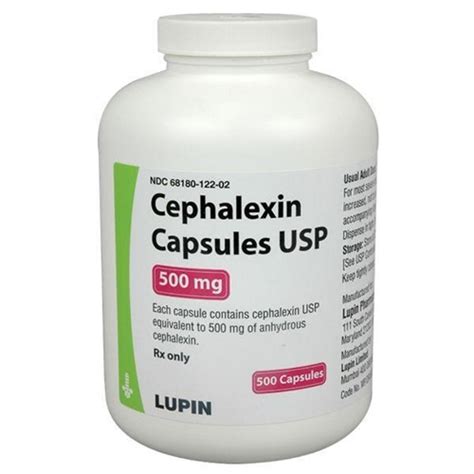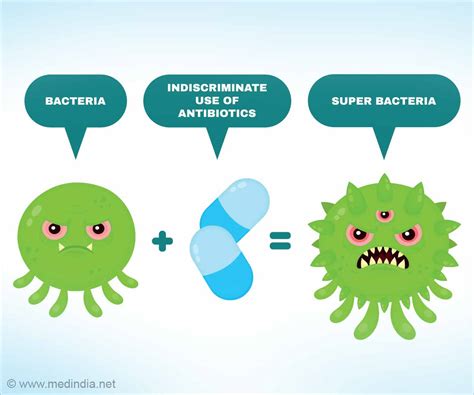Intro
Discover key facts about Cephalexin, a broad-spectrum antibiotic, including its uses, side effects, and interactions, to understand its role in treating bacterial infections, such as strep throat and skin infections, with effective dosage and precautions.
The world of antibiotics is vast and complex, with various medications designed to combat different types of bacterial infections. One such antibiotic that has been widely used for decades is Cephalexin, a cephalosporin antibiotic that belongs to the first generation of this class of drugs. Cephalexin is prescribed to treat a range of bacterial infections, including those affecting the skin, respiratory tract, and urinary tract. Understanding the key aspects of Cephalexin is essential for both medical professionals and patients to ensure its safe and effective use.
Cephalexin works by inhibiting the synthesis of the bacterial cell wall, leading to the death of the bacteria. This mechanism is crucial for treating infections caused by susceptible bacteria. The drug is available in various forms, including capsules and oral suspensions, making it accessible for patients with different needs. Moreover, Cephalexin has been found to be generally well-tolerated, with common side effects being mild and temporary. Despite its effectiveness, it's essential to use Cephalexin under medical supervision to avoid misuse and the development of antibiotic resistance.
The importance of Cephalexin lies in its broad-spectrum activity against Gram-positive bacteria and some Gram-negative bacteria, making it a versatile option for various infections. However, like all antibiotics, Cephalexin is not effective against viral infections, and its misuse can lead to significant health issues. As the medical community continues to grapple with the challenges of antibiotic resistance, understanding the proper use and benefits of antibiotics like Cephalexin is more critical than ever. By exploring the facts about Cephalexin, individuals can better comprehend how this medication works, its applications, and the precautions necessary for its use.
Introduction to Cephalexin

Cephalexin is a first-generation cephalosporin antibiotic that has been used to treat bacterial infections for several decades. Its effectiveness against a wide range of bacteria, including those causing skin and respiratory infections, has made it a staple in the medical community. The drug is administered orally, which enhances patient compliance, especially in outpatient settings. Cephalexin's pharmacokinetics allow it to achieve therapeutic concentrations in various body tissues, ensuring its efficacy in treating infections at different sites.
Pharmacology of Cephalexin
The pharmacological profile of Cephalexin includes its absorption, distribution, metabolism, and excretion. After oral administration, Cephalexin is well absorbed from the gastrointestinal tract, achieving peak plasma concentrations within a short period. It is distributed throughout the body, with concentrations in tissues and fluids generally lower than those in plasma. Cephalexin is excreted primarily unchanged in the urine, which necessitates dose adjustment in patients with renal impairment to prevent accumulation and potential toxicity.Benefits of Using Cephalexin

Cephalexin offers several benefits that make it a preferred choice for treating certain bacterial infections. Its broad-spectrum activity, although more pronounced against Gram-positive bacteria, also extends to some Gram-negative bacteria, providing versatility in treatment options. The oral route of administration enhances patient compliance, and its relatively low cost compared to newer antibiotics makes it an accessible treatment option. Furthermore, Cephalexin has a well-established safety profile, with most side effects being mild and transient, which supports its use in a wide range of patients.
Common Uses of Cephalexin
Cephalexin is commonly prescribed for the treatment of: - Skin and soft tissue infections - Respiratory tract infections, including pneumonia - Urinary tract infections - Osteomyelitis (bone infections) - Genital infectionsIts use in these conditions is based on the drug's efficacy against the bacteria commonly causing these infections. However, the choice of Cephalexin should always be guided by susceptibility testing to ensure that the bacteria are susceptible to the drug.
Side Effects and Precautions

While Cephalexin is generally well-tolerated, it can cause side effects, some of which may be severe. Common side effects include:
- Gastrointestinal disturbances (diarrhea, nausea)
- Allergic reactions (rash, itching)
- Central nervous system effects (dizziness, headache)
Severe side effects, although rare, can include anaphylaxis, Stevens-Johnson syndrome, and Clostridioides difficile-associated diarrhea. Patients with a history of allergic reactions to penicillins should use Cephalexin with caution due to the risk of cross-reactivity. Additionally, Cephalexin can interfere with certain laboratory tests, such as Coombs' test, which should be considered when interpreting test results.
Interactions with Other Medications
Cephalexin can interact with other medications, affecting either its efficacy or the risk of side effects. For example, concurrent use with metformin can increase the risk of lactic acidosis. Probenecid can decrease the renal excretion of Cephalexin, potentially leading to increased drug concentrations. Understanding these interactions is crucial for safe prescribing practices.Resistance and Misuse

The misuse and overuse of antibiotics, including Cephalexin, have contributed to the growing problem of antibiotic resistance. Resistance occurs when bacteria develop mechanisms to evade the effects of antibiotics, making infections harder to treat. To combat resistance, it's essential to use Cephalexin and other antibiotics judiciously, following guidelines and susceptibility testing results. Patients should complete the full course of treatment as prescribed, even if symptoms improve before finishing the medication, to prevent the development of resistance.
Strategies to Combat Resistance
Strategies to combat antibiotic resistance include: - Responsible prescribing practices - Public education on the appropriate use of antibiotics - Development of new antibiotics - Infection control measures to prevent the spread of infectionsBy adopting these strategies, the medical community can help preserve the efficacy of antibiotics like Cephalexin for future generations.
Conclusion and Future Directions

In conclusion, Cephalexin remains a valuable antibiotic in the treatment of various bacterial infections. Its efficacy, safety profile, and accessibility make it a preferred choice for many conditions. However, the challenges of antibiotic resistance necessitate responsible use and ongoing research into new antibiotics and alternative therapies. As the medical landscape continues to evolve, understanding the role of Cephalexin and other antibiotics will be crucial in the fight against bacterial infections.
Final Thoughts
The future of antibiotic therapy, including the use of Cephalexin, depends on a multifaceted approach that includes responsible prescribing, patient education, and continuous research. By working together, healthcare professionals, patients, and researchers can ensure that antibiotics remain effective tools in the treatment of bacterial infections.What is Cephalexin used for?
+Cephalexin is used to treat bacterial infections, including skin, respiratory, and urinary tract infections.
Can Cephalexin be used in patients with kidney disease?
+Cephalexin should be used with caution in patients with kidney disease, as it is primarily excreted by the kidneys. Dose adjustment may be necessary to prevent accumulation and potential toxicity.
Is Cephalexin effective against viral infections?
+No, Cephalexin is not effective against viral infections. It is specifically designed to treat bacterial infections by inhibiting the synthesis of the bacterial cell wall.
We invite you to share your thoughts and questions about Cephalexin and its use in treating bacterial infections. Your engagement and feedback are invaluable in helping us provide accurate and helpful information. Please consider sharing this article with others who might benefit from understanding the role of Cephalexin in modern medicine. Together, we can promote responsible antibiotic use and contribute to the global effort against antibiotic resistance.
